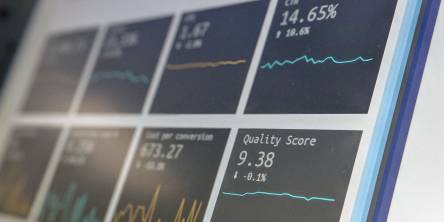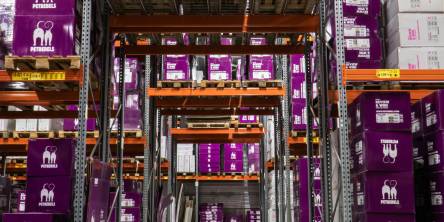Azure Synapse Analytics versus Microsoft Fabric: A Side by Side Comparison

Given the staggeringly high amounts of data being generated worldwide every single day, it ought to come as no surprise that organizations often struggle to pick the right tools to help them effectively harness the potential of all their data. And in this continually evolving realm of data management and analytics, Azure Synapse Analytics and Microsoft Fabric have emerged as the top contenders. But which of these two should one choose?
If you, too, are pondering the same question, you have come to the right place. So, read on to know what Azure Synapse Analytics and Microsoft Fabric are all about and the main differences between the two.
What Refers to Azure Synapse Analytics?
Built on the Azure cloud platform, Synapse Analytics is an analytics service that combines data warehousing with big data analytics. Simply put, it brings a platform to enable data ingestion, storage, processing, analysis, and visualization, no matter its volume or variety.
What Refers to Microsoft Fabric?
On the outset, Microsoft Fabric is an analytics platform enabling data ingestion, processing, analysis, and visualization. However, it includes the capabilities of several Azure services, including Synapse Analytics and Azure Data Share, Power BI, etc. This basically means that Synapse Analytics is a subset of Fabric.
However, just the definitions are not enough to help you decide if you need Azure Analytics or MS Fabric services. This is why we compiled a list of the primary differences between the two. Read on to know more.
Azure Synapse Analytics vs Microsoft Fabric: How Are They Different?
- Data sharing: Fabric can offer users extensive data sharing capabilities, thanks to Azure Data Share. Now that's not to say that Synapse Analytics doesn't offer such capabilities — it does, but through linked services and dedicated pools. Another notable difference is that while Fabric allows data to be shared with collaborators, customers, and external partners, that is not the case with Synapse. Synapse allows data to be shared only within an organization and with controlled access.
- Storage format: In the context of the primary storage format, Azure Synapse Analytics uses the Synapse SQL pool for structured data and Azure Data Lake Storage Gen2 for unstructured data. On the other hand, Fabric uses the OneLake data lake format, allowing users to store structured, semi-structured, and, even unstructured data.
- Performance: Another critical point of distinction is performance, of course. Microsoft Fabric relies on Azure's infrastructure to deliver optimized performance. On the other hand, the Synapse SQL pool too enables high-quality performance for demanding workloads and that too with auto-scale capabilities.
- Scalability: Scalability too, remains a critical differentiating factor for businesses today and understandably so. Anyway, in this department, Fabric can be automatically scaled based on demand. Synapse offers the ability to scale manually and automatically: Synapse SQL pool can scale automatically depending on the workload requirements, whereas Spark pools can be manually scaled.
Final Words
In conclusion, the comparison between Azure Synapse Analytics and Microsoft Fabric reveals two robust solutions designed to address distinct data and analytics needs. With its integrated analytics service, Azure Synapse Analytics offers a comprehensive platform for big data and data warehouse scenarios. Its ability to seamlessly bridge the gap between data preparation and analytics empowers organizations to derive meaningful insights from their data. And if you need help with Azure Synapse Analytics, you can work with a specialist data analytics company that offers services for Azure Analytics. On the other hand, Microsoft Fabric, with its focus on simplifying and accelerating the development of scalable and resilient microservices, serves as a robust foundation for building modern, cloud-native applications. Its emphasis on agility and scalability makes it a valuable choice for organizations seeking to architect and deploy applications modularly and efficiently.
Ultimately, the choice between Azure Synapse Analytics and Microsoft Fabric depends on the specific requirements and goals of the organization. Whether the priority is optimizing data analytics workflows or developing scalable and resilient applications, Azure Synapse Analytics and Microsoft Fabric offer compelling features within their respective domains. As organizations navigate the evolving landscape of cloud services, a thorough understanding of their unique needs will guide them toward making an informed decision that aligns seamlessly with their business objectives and technical requirements.
Similar Articles
Unless you have been hiding in a cave somewhere, you would know and realize that the world is creating information at a stunning speed. While it is genuinely considered normal information that said data can now be turned into the groundwork of achievement for essentially any business in the present day and age.
Software development refers to the procedure of constituting and nourishing software applications. This provokes the utilization of many fundamentals and practices. Software development targets constitute structured, dependable, and beneficial software.
Designing a data warehouse is a strategic activity that builds the groundwork for strong data management and analytics capabilities within a business. In today's data-driven world, the systematic creation of a data warehouse is not only a technical requirement but also a critical step in harnessing the power of information for informed decision-making.
The integration of Internet of Things (IoT) technology into the construction and real estate sectors, which include buildings, infrastructure, homes, and businesses, is predicted to increase dramatically in the future. Despite this predicted expansion, the construction industry is behind other industries in terms of IoT adoption.
In this dynamic world of innovative and transformative technology, the use of Minimum Viable Product (MVP) has proven to be a winning strategy for success.
While monolithic applications may have waned in popularity during the era dominated by the cloud and microservices, interest is resurgent. Organizations, in considering their position on the application modularity spectrum, are now examining both the advantages and drawbacks of relying on microservices.
Data visualization is an indispensable tool that allows us to transform raw, and often unstructured data into insightful visuals, identify patterns, and communicate these insights to the wider audience and stakeholders.
For modern businesses to thrive, ensuring the effective management of inventory stands has become vitally important. Inventory management stands as a cornerstone of success. And the emergence of the Internet of Things (IoT) has introduced a new era of connectivity and efficiency across diverse industries.
Do you know what the following e-commerce companies have in common: Amazon, Walmart, eBay, and more? All of these e-commerce companies' apps make use of Java. Java is decidedly among the leading choices of programming language for e-commerce applications because it offers a world of benefits; for example, since Java code can be run on any platform with a Java Virtual Machine (JVM), users of e-commerce apps made with Java can access the said apps on a variety of devices.








